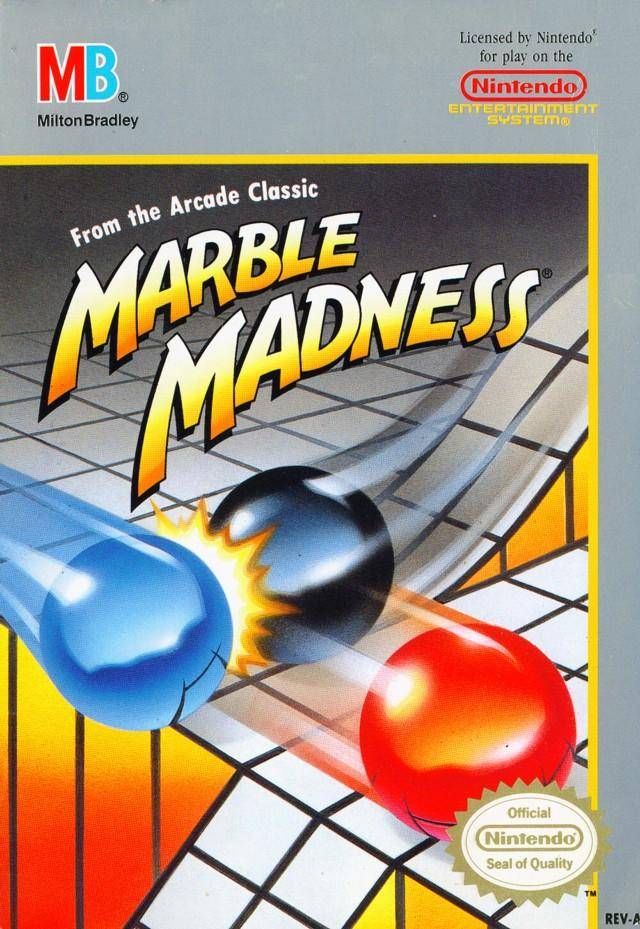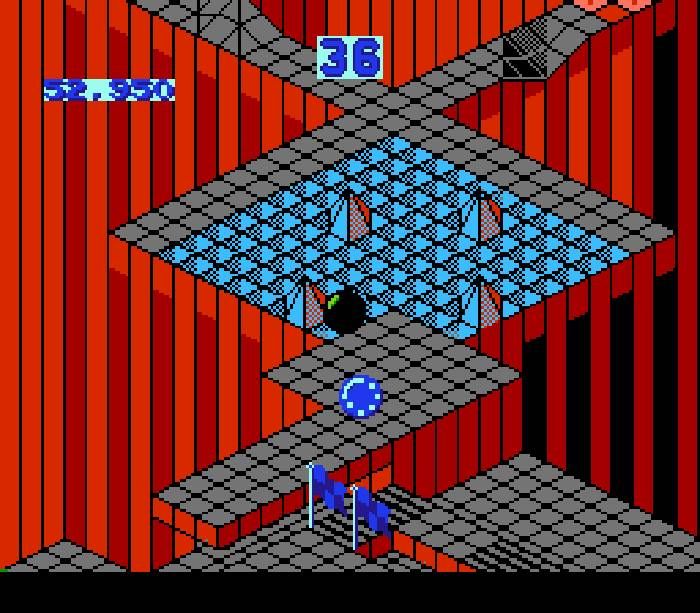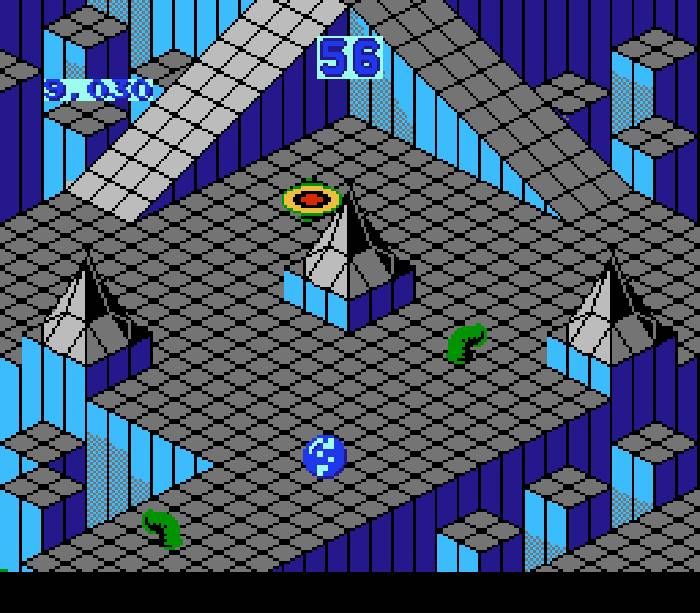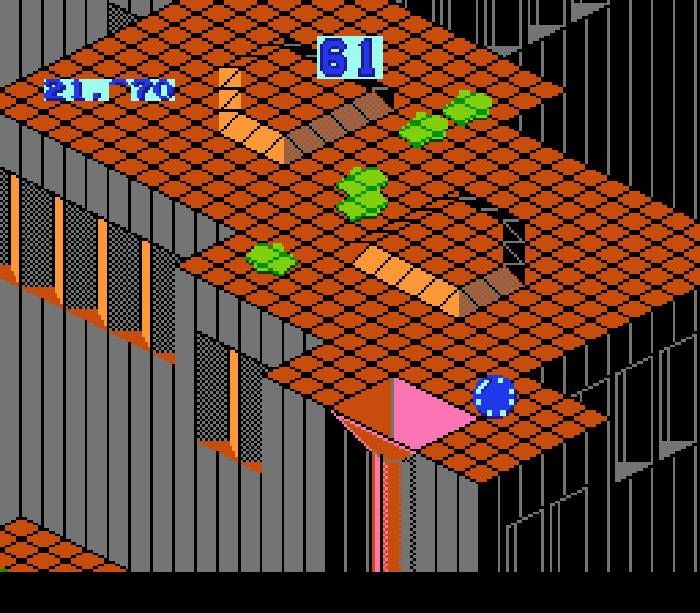Publisher: Atari Games
Designer: Mark Cerny

(“I designed a game I’d want to play so you’d want to play it.” -- Mark Cerny)
Marble Madness was devilishly difficult to play. In the arcade, the machines came equipped with trackballs, which allowed you 360-degree control over the titular marble, but the NES had no such peripheral and the d-pad made for a singularly poor substitute. Despite the game’s control-scheme concession of offering a choice between 90-degree or 45-degree directionals, the combination of the d-pad’s limitations and some ahead-of-their-time physics resulted in the sensation of trying to steer a fighter jet with a handlebar. Oh, and don’t get me started on that damn Black Marble. That guy was a straight-up bastard.

The fact that it was so hard is precisely the reason why it’s remembered so fondly today. We spent hours - HOURS - trying to maneuvre our marble around obstacles, past Black Marble, down pipes and along ledges, sometimes gaining little more than a few inches at a time between spawns. Marble Madness was not designed to be played with an NES controller, but we still attempted to master it.
Of course, it didn’t hurt that Marble Madness featured a catchy and memorable soundtrack ranking amongst the best of the 8-bit era, gorgeous isometric level design, and a truly novel gameplay concept. Besides increasing in difficulty, each level possessed distinct qualities: the Practice stage was shorter and contained fewer enemies, pitfalls and ledges; the Silly stage reversed the established direction of courses to that point and forced the player to roll uphill; the Ariel stage contained ramps, catapults and funnels, ensuring that the titular marble spent much of its time aloft. And though the list of hostile entities was short, they were memorable: tube worms which leapt on and devoured you, sentient puddles of acid which reduced you to molten glass, and the aforementioned Black Marble, who seemed to exist for no other reason but to cause you immeasurable grief.

Marble Madness came about as a direct result of the North American videogame crash of 1983. The causes of and factors related to this industry-wide implosion are too numerous and complex to get into here, but suffice it to say that Atari was one of the hardest-hit companies by the disaster (owing in part to their extemely poor Atari 2600 port of Pac-Man on 1981, and similarly poorly-designed E.T.: The Extraterrestial, released the following year) and consequently set about rethinking videogames from the ground up. Designers were pressed into adopting two specific goals in their games: providing a distinctive experience through the use of a unique control system, and offering a simultaneous two-player mode.
Taking these missives to heart, Mark Cerny conceived of a game with trackball controls, a multiplayer race mode and unique isometric graphics, and spent 10 months developing Marble Madness with lead programmer Bob Flanagan. Since Atari was in difficult financial straits owing to the market collapse, Cerny and Flanagan were placed under strict deadline and hardware restrictions. Released on time and on budget, the resulting game was, at only six levels, relatively short; for six weeks after release, it became the highest-earning arcade game, but by the seventh week, it dropped off the charts due to its short play-through time.

Despite respectable earnings, Marble Madness couldn’t rescue Atari from the mire they had gotten bogged down in, but it remains one of the last great games from the golden age of arcades and managed to make a respectable transition to the home console market. It was ported to a wide range of consoles and home computers, including the Commodore 64, Amiga, Game Boy, Sega Mega Drive and of course, the Nintendo Entertainment System. A mobile phone version of Marble Madness was announced by Electronic Arts in 2010.
| (Mark Cerny, who has executive produced or contributed to dozens of games, including Crash Bandicoot, Ratchet & Clank, Uncharted: Drake’s Fortune and Resistance: Fall of Man, designed Marble Madness when he was only 18 years old.) |

No comments:
Post a Comment